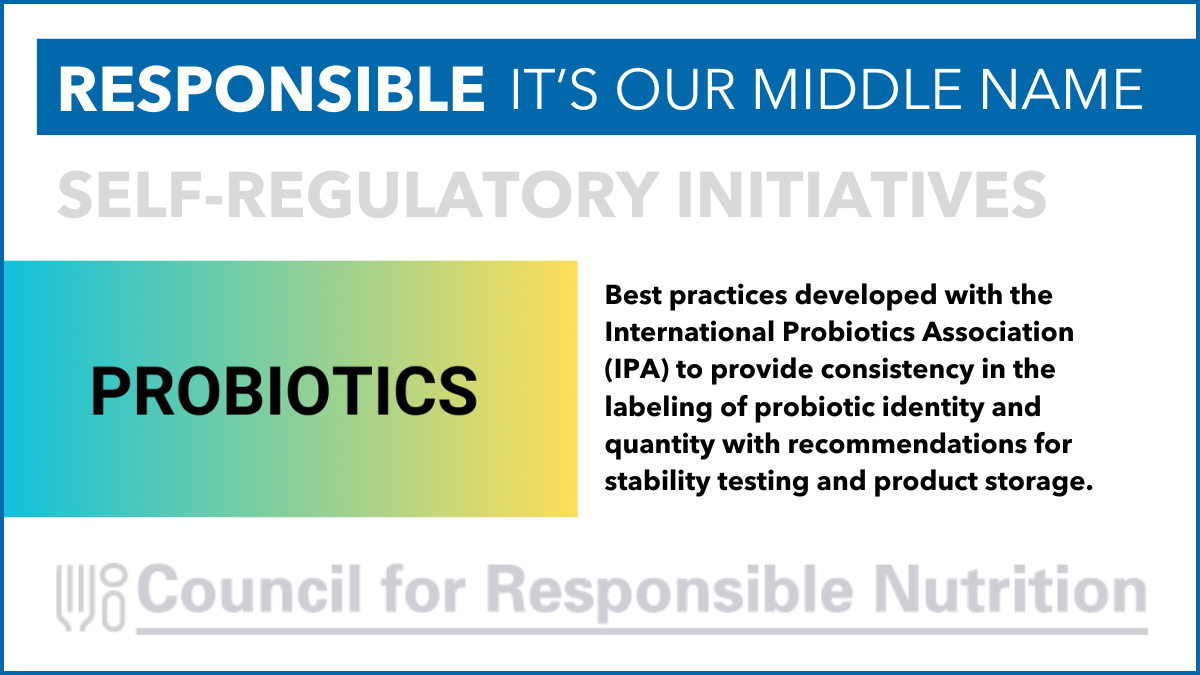The Council for Responsible Nutrition (CRN) and the International Probiotics Association (IPA) support and encourage responsible production and marketing of dietary supplements and functional foods that contain probiotics and developed guidelines to facilitate transparency and consistency.
The science-based best practices for probiotic-containing dietary supplements and functional foods address:
- Labeling
- Stability testing
- Storage recommendations
Best Practices document (PDF)
Labeling guidelines were developed to provide information about the identity and quantity of the probiotics in a product that will help consumers make informed choices. Stability testing guidelines were established to ensure that the stated shelf life of a given probiotic product is scientifically supported. Storage recommendations were provided to facilitate the communication of storage and handling instructions to customers.
The guidelines take into account the current U.S. laws and regulatory requirements. While the guidelines do not specifically address regulatory requirements outside of the U.S., the scientific principles underlying the guidelines may apply to international regulatory paradigms. The guidelines reflect the most up-to-date science and industry thinking, and will be updated as best practices evolve.
The precise definition of probiotics is the subject of ongoing discussions. For the purposes of the guidelines, probiotics are defined in accordance with the Food and Agriculture Organization of the United Nations (FAO) and World Health Organization (WHO) definition: “live microorganisms which when administered in adequate amounts confer a health benefit on the host.”1

1 Joint FAO/WHO Expert Consultation on Evaluation of Health and Nutritional Properties of Probiotics in Food including Powder Milk with Live Lactic Acid Bacteria. (2001). Health and nutritional properties of probiotics in food including powder milk with live lactic acid bacteria. Available here.

